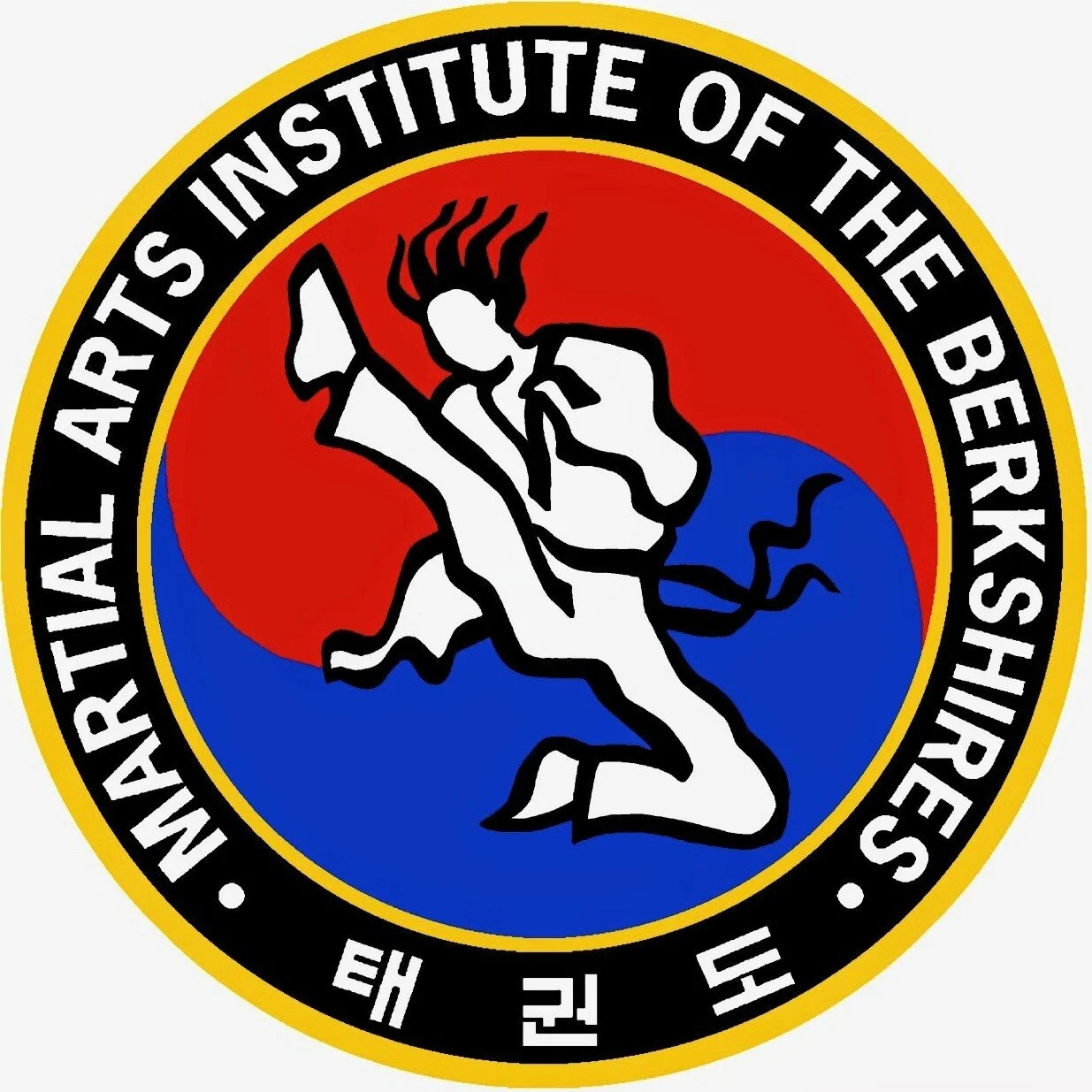Student Resources
Welcome to our Student Resource page. Here, we provide a wide variety of resources for students to use to strengthen their own martial arts journey. We've also included answers to some questions that you find on Test Applications or that you might be asked by the Instructors or Masters. Can you find them below? Scroll down to explore!
Tying Your Belt
One of the first things student learn how to do is tie their belts. Like everything, it takes practice, but is very important. Why? Not only does the your belt keep your uniform from flapping around, but it is also symbolic. By tying your belt properly, you are showing that your mind and body are in unison. Again, it takes practice, but as you perfect your skills, getting better and better, then your body and mind start acting as one.
Meaning of the Taegeuk Poomses
Often on the Test Application Form, students see the question “What does your Taegeuk Poomse mean?” and students panic!
But don’t worry, we have the answers, though we have to talk about history and spirituality for a moment.
The meaning of the forms, or poomse, comes from an ancient Chinese text called the I-Ching. The I-Ching was (is, in some cases) used to divine answers to spiritual questions and also can be used to tell someone’s fortune. In the I-Ching, there are symbols called trigrams, which appear on the Korean flag.
In each corner, you can see a trigram. To break it down, each trigram represents an element. Each element is connected to an individual Taegeuk Poomse. Whew, it’s like a spiderweb! But let’s learn what each Taegeuk means, now that we understand where the meaning comes from.
Taegeuk Il Jang (Yellow Belt): Heaven. Also means the beginning and creation of all the things in the universe. As this is the first Taegeuk, it of course is represented by the Heaven (“Keon”) trigram.
Taegeuk Ee Jang (Orange Belt): Lake, which is often linked to spiritual joyfulness. Lakes can be mysterious too, with a calm, smooth surface, but deep, dark depths you can’t see into. This poomse could mean that you have just begun to scratch the surface of Taekwondo, and there is much to learn. This trigram is called “Tae”.
Taegeuk Sam Jang (Green Belt): “Ree” or “Ra” is what this trigram is called, and means Fire or Sun. When you think of fire or our sun, what do you feel? What does it mean to you? Others have seen this poomse meaning a growing sense of confidence or inspiration to keep training in Taekwondo. Master Childs likes to think of it like a spark that is beginning to catch and shed light on the hidden secrets of Taekwondo. What do you think?
Taegeuk Sa Jang (Blue Belt): Thunder. This is where things suddenly change. The poomse means strength and dignity, which should be shown in the moves/techniques. At this point, new abilities, new strengths are emerging in the student, like thunder suddenly echoing across the skies. How can you show “thunder” when you practice? The thunder trigram is called “Jin”
Taegeuk Oh Jang (Purple Belt): Wind. The trigram name is “Son”. Wind never stops, it is a continuous force, both powerful and gentle. When practicing this form, you must constantly move, flowing like a breeze, then striking like a gust of powerful wind (for those that know, think Aang from the TV show Avatar: The Last Airbender)
Taegeuk Yuk Jang (Brown Belt): Water. “Kam/Gam”. Water in many cultures is linked to the Moon, so sometimes this trigram can also represent the Moon. Though water is thought to be “soft”, it is incessiant, meaning it is always moving. Similar to wind. Water can be “soft” but it can be strong enough to move mountains and wipe out cities. It is patient enough to carve hard stone. How do you think the Grand Canyon was made? This form should flow like water, washing over oppoents and patient. Water can be fast and slow. It is a form of balance.
Taegeuk Chil Jang (Red Belt): Mountain, or “Kan”. What do think or feel when you look up at the mountains? Are they mysterious because they are so old? Are the awe inspiring because they reach for the skies? Mountains are often thought of as symbols of strength and stability. Long ago, many monks would go to the mountians to meditate and/or train, so mountains can also mean perserverance or the ability to stand true no matter what comes your way, without giving up.
Taegeuk Pal Jang (Advanced Red Belt): Earth. “Kon” is the name of this final trigram that represents the final taegeuk poomse. Earth has many meanings, but it is usually seen as both a beginning and an end. You plant seeds in the earth, and they begin their lives there. In the USA, people are often buried in the earth at the end of their lives (some cultures and religions are different). In Taekwondo, this poomse/trigram means that you have reached the end of the colored belt ranks and you will begin your journey into the black belt ranks. That is a huge step, for every. single. student. Ever. At this point, at this belt, you look back and realize how far you have come, how much you have grown in body, mind and spirit. And how far you have yet to travel.
sources used:
https://blackbeltwiki.com/meaning-of-wtf-taegeuk-forms,
https://martialfemme.com/2020/04/19/poomsae-and-kwaes-the-meaning-of-the-first-8-taeguk-coloured-belt-patterns-of-taekwondo/



